Chapter: 11th Geography : Chapter 7 : The Biosphere
Types of Biomes
Biomes
An ecosystem as already explained consists of a biological community and an abiotic environment. Ecosystem may be broadly divided into land or terrestrial ecosystem and water or aquatic ecosystem. The aquatic ecosystem can be further divided into freshwater and marine ecosystem.
An ecosystem becomes a biome when it extends over a large area. According to
It may be concluded that a biome is in fact a large ecosystem where we study the total assemblage of plant and animal communities. Since vegetation is the most dominant component of a biome and as vegetation and climate are very intimately related, the world is divided into a number of biomes based on major world climatic types (Figure 7.7).
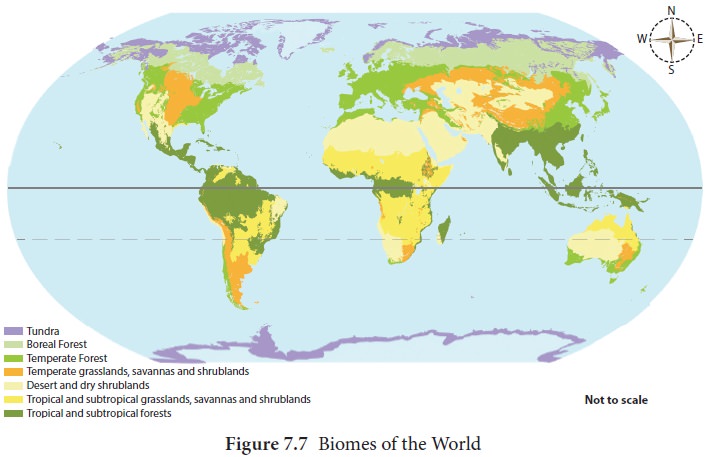
Types of Biomes
World Biomes are mega ecosystems existing and operating over large areas. These divisions are based on climate pattern, soil types, and the animals and plants that inhabit an area. Basically, biomes are classified into two major groups such as Aquatic biomes andTerrestrial biomes.
Wetlands are transition zones between aquatic and terrestrial biomes
To understand the earth biomes, it is necessary to understand the following:
1. The characteristics of regional climates.
2. Aspects of the physical environment.
3. The type of soil and the processes contributing to soil development.
4. The distribution of flora in the area.
5. The distribution of fauna in the area and their adaptation to the environment.
I. Aquatic Biomes
The aquatic biomes are the most important of all the biomes as, the water forms the vital resource and is essential for any life form. Since many types of species live in the water, it is one of the most important natural resources that need to be protected.
Aquatic Biome is further divided into:
A. Fresh Water Biome and
B. Marine Biome
A. Fresh Water Biome
These biomes are spread over all parts of the earth and have different set of species depending on their location and climate. Fresh water biomes include areas of ponds, lakes, streams, rivers and wetlands. Lakes and ponds are stagnant water bodies and are smaller in their area. The diversity of life forms in river changes with increasing water volume. For example, Dolphins are found in the river Ganges, Brahmaputra and the Indus which carry huge volumes of water.
B. Marine Biome
Marine biome is an aquatic biome which is salt water biome occupying seas and oceans of the world. Marine biome plants have various roles, plants such as sea grasses and macro algae give shelter and nutrient for many animals.
Marine plants are sources of nutrients for the corals and help corals to build up reefs. The reefs are kept intact by plants like coralline algae.
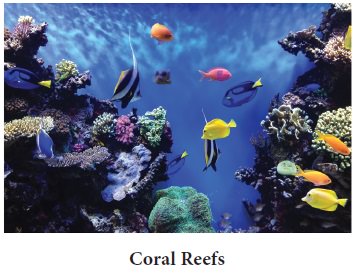
Corals are marine invertebrates which live in compact colonies. They inhabit tropical oceans and seas. Corals cannot survive in waters below 20°C but grow optimally in temperatures between 23°–29° Celsius. Coral reefs are marine ecosystems which are held together by structures made of calcium carbonate secreted by the corals. Coral reefs are mainly classified into three types – Fringing reef, Barrier reef and Atoll .
Fact File
Sea grasses are plants that live in saltwater. There are over 50 species of sea grasses. Sea grasses have flowers, roots, and specialized cells to transport nutrients within a plant. This makes them similar to land plants and different from algae or seaweeds.
Fringing reefs grow seaward from the shore along the coast forming a fringe. They are the common type of reefs.
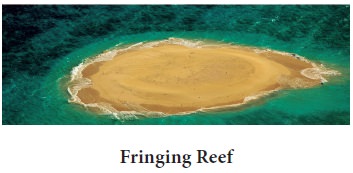
Barrier reefs also border the shoreline but are separated from the coast by an expanse of water or lagoon.
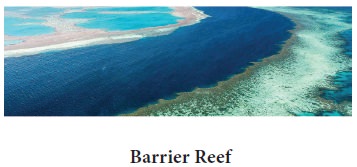
Atolls are coral reefs that are circular in shape enclosing a lagoon with absence of an island in the center.
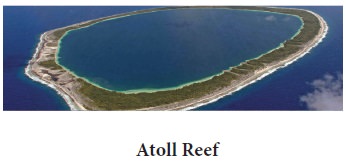
Marine biome includes fishes, whales, crustaceans, molluscs, sea anemones, fungi and bacteria. Marine species are continuously impacted by change in climatic condition and the oceans are frequently disturbed by ocean waves and currents.
c. Wetlands:
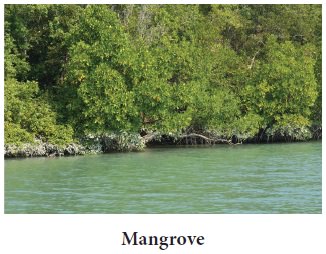
A wetland is an area of land which is permanently or periodically saturated with water and exists as a distinct ecosystem. Wetlands play many roles in the environment, such as water purification, flood control, carbon sink and shoreline stability. Wetlands are home to a wide range of aquatic plants and animal life. Wetlands can be freshwater, brackish, or saltwater. Examples of aquatic vegetation that thrive in wetlands are milkweed, bald cypress trees, mangroves and cattails.
Fact File
Crustaceans are chiefly aquatic arthropods having a body covered with a hard shell or crust and several pairs of legs. Example: crab, lobsters, crayfish, barnacles shrimps, krill etc.
Molluscs are organisms with soft bodies. Often their bodies are covered by hard shells. Example: snail, slug, squid, cuttlefish, mussel, clams, oysters, octopuses etc.
Fact File
A Bog is a type of wetland ecosystem characterized by wet, spongy, poor-ly drained peaty soil formed from dead plants specially moss. Bogs have moss, sedges, grasses, such as cotton grass; insectivorous plants like pitcher plants; and many orchids. The gradu-al accumulation of decayed plant ma-terial in a bog functions as a carbon sink.
A Fen is a low land that is covered wholly or partly with water. They re-ceive nutrients from ground water and have peaty alkaline soil. Their charac-teristic flora are sedges and reeds.
Mangrove swamps are coastal wetlands found in tropical and subtropical regions. These wetlands are often found in estuaries, where fresh water meets salt water. Mangrove trees dominate this wetland ecosystem due to their ability to survive in both salt and fresh water. The Sundarbans is the largest Mangrove region in the world and a UNESCO World Heritage Site.
Mangrove forests of Tamil Nadu:
Mangrove forests are found along the coast of Tamil Nadu in Pichavaram, Muthupet, Ramnad, Gulf of Mannar and Punnakayal.
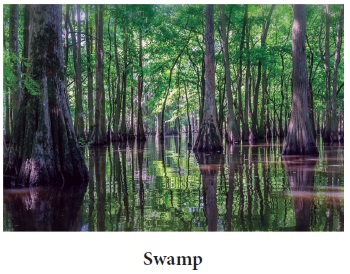
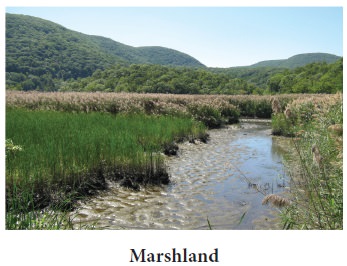
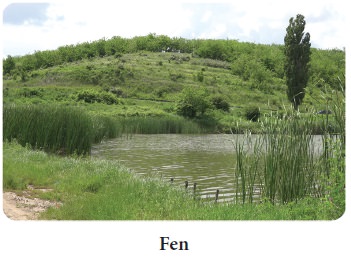
II. Terrestrial Biome
Terrestrial biomes are very large ecosystems over land and they vary according to latitude and climate. They can be divided into numerous sub-types. In this lesson they are broadly divided into eight types.
i. Tropical Evergreen Rain Forest Biome
Tropical Evergreen Rain Forest Biome extends between 10° North and South of the equator (Figure 7.8). This biome is seen in the Amazon Basin of South America, Congo Basin of Africa and the Indo Malaysian Region of Southeast Asia (Java, Sumatra, Borneo, Malaysia and Guinea)
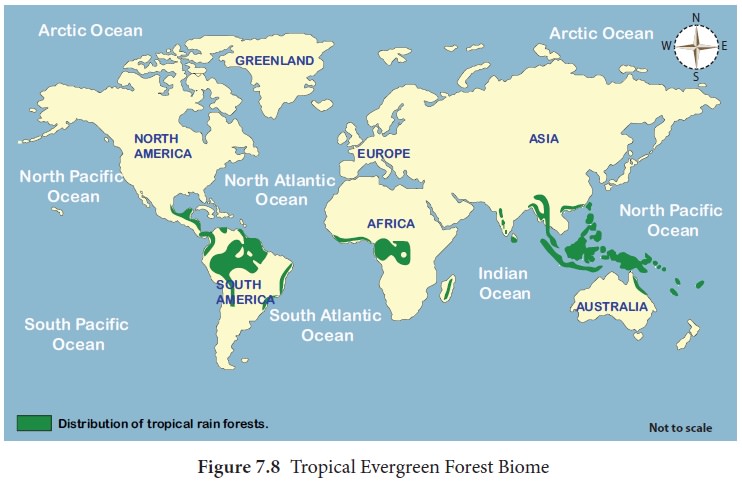
This biome receives direct sunlight throughout the year and so temperatures are high year round. The average annual temperature is 20°C to 30°C. The average annual rainfall of the tropical evergreen rain forest is 200cm.
The Tropical Evergreen Rain Forest Biome has the largest number of plant and animal species. Broad leaved, tall evergreen hard wood trees are found in this biome. Trees grow up to 20 to 35 meters high. The forest is characterized by thick undergrowth and creepers. The main trees in this biome are mahogany, rose wood, ebony, cinchona, rubber, coconut palm, cane, bamboo etc.
This forest biome has innumerable insects, birds, reptiles and furless animals. At the edge of the forest animals like gorilla, and monkey are found.
Important tribes inhabit this biome, for example the Pygmies in the jungles of Africa and the Yanomani and Tikuna tribes of the Amazon region. Traditionally they live by hunting and gathering food. In the recent years in South East Asia, the tropical evergreen rainforest has been slowly replaced by rubber and sugarcane plantations. The human settlements in this biome are small and scattered.
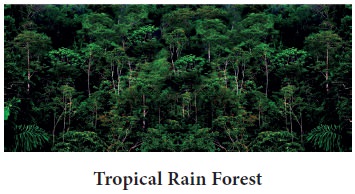
ii. Tropical deciduous Forest/Monsoon Forest
Tropical deciduous forest is found in the regions experiencing monsoon climate. This biome is also called as the dry forest or monsoon forest biome.
This is found in South and South East Asia in parts of India, Myanmar, Vietnam, Thailand, Cambodia and southern coastal China. It is also found in eastern Brazil and in smaller areas in South and Central America, the West Indies, southeastern Africa, and northern Australia.
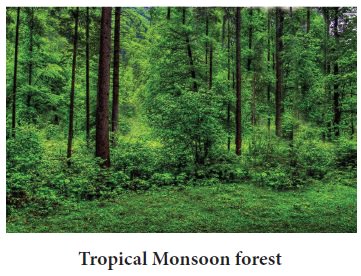
In this biome, the temperature varies from one season to another season. In summer the maximum temperature ranges from 38°C to 48°C. Summer season is warm and humid. In the dry winter season temperature ranges between 10°C to 27°C. The total amount of precipitation is 75 to 150 cm/year and this affects the natural vegetation of the tropical deciduous forest biome.
The plants shed their leaves during the dry season. Trees here have huge trunks with thick rough barks. The plants grow at three different levels. The common trees are teak, sal, sandalwood, mahua (illupai), Mango, Wattle, Bamboo, semal (Illavamaram), sheesham (Karuvellamaram) and banyan.
The animals of this biome are elephant, lion, tiger, leopards, bison, tapier, hippopotamus, wild boar, flying squirrel along with a wide variety of bird species. This biome faces rapid rate of deforestation and is, therefore, one of the most disturbed ecosystem in the world. Large tracts of forests have been destroyed for agriculture and urban development. Several species of precious animals have now become endangered Example: lions, tigers, leopards, etc.
iii. Temperate Deciduous Forest Biome
The temperate deciduous forest is a biome that is always changing. This biome lies in the mid- latitude areas of the earth, between the tropics and Arctic Circle i.e., between 30° and 50° north and south of the equator. The temperate deciduous forest biome can be seen in the eastern United States, most parts of Europe, China, Japan, North and South Korea (Figure 7.9). The average annual temperature is 10°C.
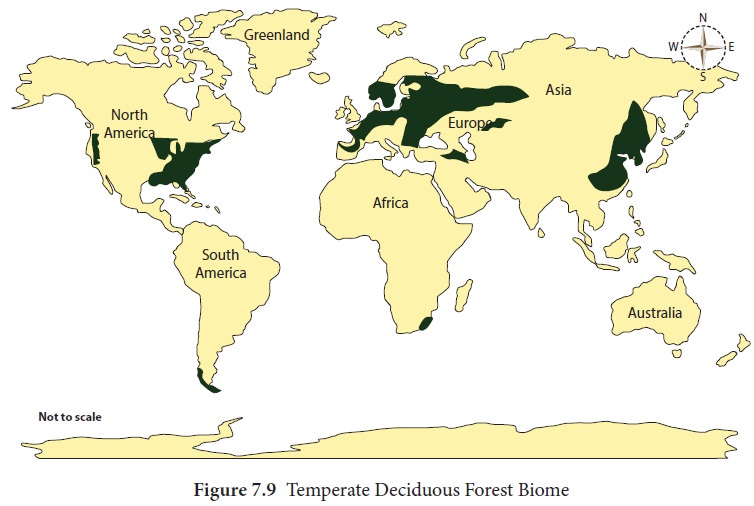
These biomes have four seasons such as winter, spring, summer and fall. Winters are cold and summers are warm. As winter approaches, the duration of day light decreases. In this biome, deciduous trees shed their leaves in the fall. The production of chlorophyll in the leaves slows and eventually stops revealing leaves having bright red, yellow and orange colors. These forests are also known as broad leaved forest, because the trees have wide flat leaves. Some important trees found here are oak, maple, beech, hickory, cedar and chestnut. On the forest floors that receive very little sunlight are found mosses, azaleas and mountain laurels.
Inhabiting the temperate deciduous forest are ants, insects, flies, bees, wasps, cicadas, walking sticks, moths, butterfly, dragon flies, mosquitoes and praying mantises.
Frogs, toads, snakes and salamanders are some of the reptiles in this biome. Common birds found in this biome are woodpecker, robin, jays, cardinals, owls, turkeys, hawks and eagles. Small mammals like rabbits, otters, monkeys, beavers, squirrels and porcupine are also seen in this biome along with bears, grey fox, wolves, white tailed deer and moose. Animals that live in this biome adapt to the changing seasons. Some animals migrate or hibernate in winter.
Most of this forests on the earth are cleared for agriculture. The soil here is very fertile. This is one of the most important agricultural regions of the world.
Grasslands
Grasslands are found bordering the deserts and make up for one fourth of the natural vegetation of the earth. Those that lie in the low latitudes are called tropical grasslands and the ones which lie in the mid latitudes are called temperate grasslands.

iv. Tropical Grassland Biome or Savanna Biome
The tropical grass land biome is generally referred to as the Savanna biome. A savanna is a rolling topography that features vast open grasslands scattered with small shrubs and isolated trees. It is found between the tropical rainforest and desert biome. Tropical grassland biomes are mainly found in Africa, South America and Australia. Tropical grasslands in Africa is known as the savannas. Tropical grasslands are called as llanos in Columbia and Venezuela and as Campos in Brazil of South America.
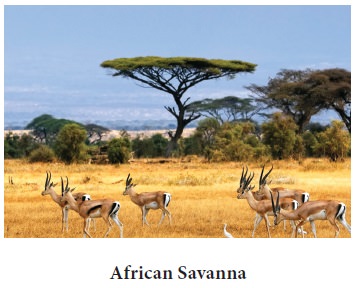
Savanna biomes experience warm temperature year around. It has very long and dry winter season and a very wet summer season. The grass here is very tall often one or two metres tall scattered with small shrubs and isolated umbrella shaped trees like the acacia and the baobab trees which store water in their trunks.
Most of the animals in the savanna have long legs, like the giraffe and kangaroo. The carnivorous animals like lions, leopards, cheetahs, jackal and hyenas live in this biome. Zebras and elephants are also found in this biome.
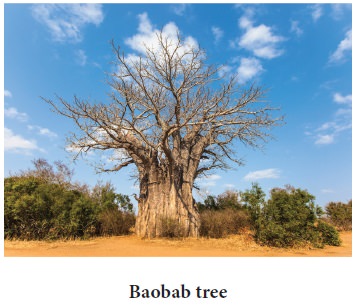
In many parts of the savannas of Africa people have started using the grassland for grazing their cattle and goats. Due to overgrazing in this region most of the tropical grasslands here are lost to the Sahara desert year after year.
v. Temperate Grassland Biome or Steppe
The temperate grassland biomes are generally found in the interior of the continents in the mid latitudes. These grassland biomes are found in the transitional zone between the humid coastal areas and the mid latitude deserts.
The temperate grasslands are known as Steppes in Europe and Asia, Prairies in North America (Canada and USA), Pampas in South America, Veldts in South Africa, Downs in Australia and Puszta in Hungary. The annual range of temperature is quite large with summer temperature reaching as high as 38°C and winter temperatures falling down to -40° C. The rainfall is moderate from 25 cm to 50 cm. Grasses form a The height of the grasses depends upon the amount and distribution of rainfall.major part of the vegetation in the temperate grasslands.

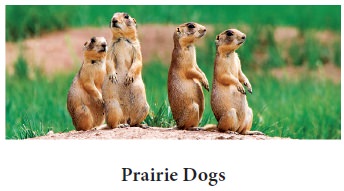
The height of the grasses depends upon the amount and distribution of rainfall.
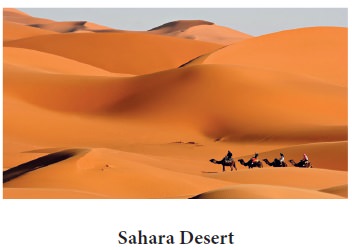
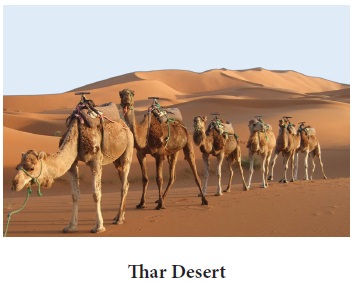
The animals in this area include the bison, wolves of the Prairies of North America. The other animals and birds are coyotes, prairie dog, foxes, mice, rabbits, badgers, rattle snakes, pocket gophers, weasel, grasshoppers, quails and hawks.
vi. Tropical Desert Biome
A tropical desert is the hottest and driest place on earth where rainfall is very scanty and irregular. This biome is typically found in the western parts of the continents within the tropics.
In the northern hemisphere, the Afro – Asian deserts form the longest belt which includes the Sahara desert, Arabian desert and the Thar deserts. In North America the tropical deserts cover, California, Arizona and New Mexico states of USA and it further extends to Mexico. The deserts in the southern hemisphere are, the Atacama desert west of Andes mountains in South America, the Namibian and the Kalahari deserts in southern Africa and the Great Australian desert in the central and southern parts of Australia.
The tropical deserts are not conducive for the growth of vegetation due to shortage of water. The plants found here are the xerophyteswhich have their own moisture conserving methods such as long roots, thick barks, waxy leaves, thorns and small leaves so as to avoid evapo-transpiration.
The main trees and bushes found in this region are acacia, cacti, date palm, kikar, babul etc.
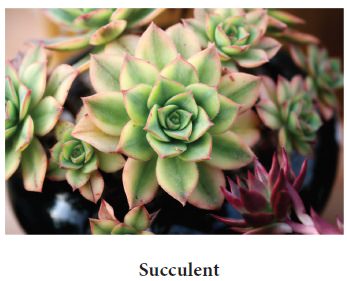
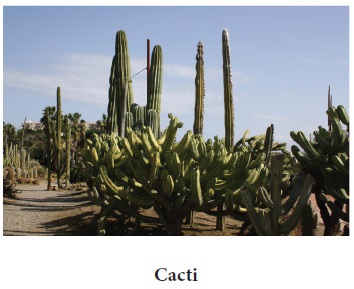
The animals in this biome are limited in number. They are able to bear the drought and the heat of the desert. Animals like the camel, antelopes, fox, spotted hyena, fallow deer, cape hare, hedgehog etc., live in the desert.
The tropical desert biomes are agriculturally unproductive except in and near the oasis. In the oasis, cultivation is carried through irrigation either from streams or from underground sources. Date palms are widely grown here.
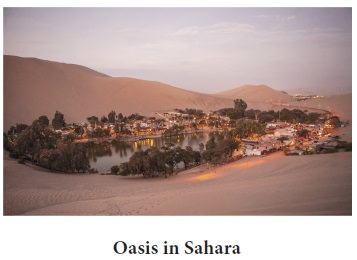
The people in the deserts are generally nomads living in tents and moving from place to place. They are the Berbers of North Africa, the Bedouins of the Arabian deserts, the Damara in Namibia, the Bushman of the Kalahari Desert and the Aborigines of Australia. They practice food gathering and hunting while some herd cattle, goats and camel and some of them practice very simple subsistence farming.
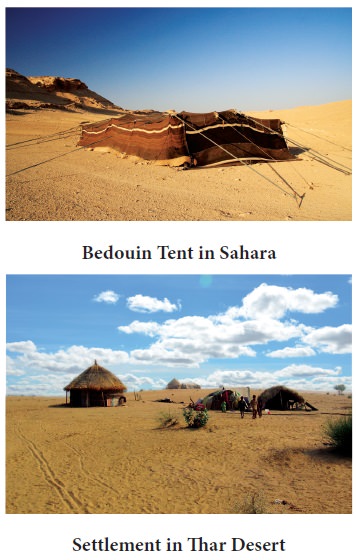
vii. Taiga or Boreal Forest Biome
The taiga biome is the largest terrestrial biome and extends across Europe, North America and Asia. The taiga biome is also known as coniferous forest or boreal forest biome. It extends from about 50° to 55° North to 65 ° to 70° North latitudes. This region lies between the temperate grassland in the south and the polar tundra in the north. The taiga region is absent in the southern hemisphere mainly because of the narrowing of continents towards the South Pole.
This biome has short wet summer and long cold winters. The taiga region has low mean annual precipitation ranging between 35 cm and 60 cm and the rainfall occurs mostly in summer. It receives plenty of snow during winter.
The taiga or boreal forest biome consists mainly of evergreen coniferous forests. The important coniferous trees in this biome are pines, spruces, firs, maples and cedars. During the short summer season snow melts and this helps lichens, mosses and short grasses to grow and cover the ground. These are called ‘meadows’.
Taiga is the home of some larger animals like moose, deer, and bears, while smaller animals like bobcats, squirrels, chipmunks, ermine, and moles are also found. Animals of the taiga have specialised adaptation including lot of thick fur or feathers and the ability to change colours during different seasons example ermine.
Fact File
The ermine is a small mammal, which is covered with thick dark brown fur in summer. This changes to white in the winter, an adaptation which helps the ermine to blend into its surroundings and makes it more difficult for the predators to spot them.
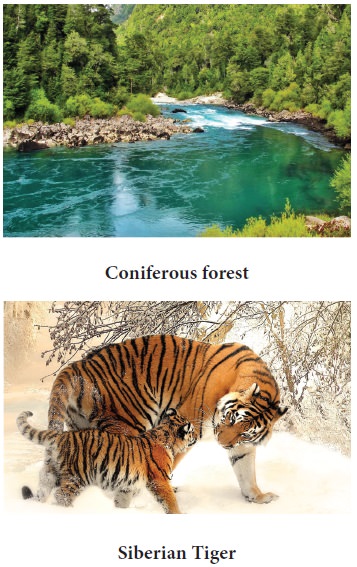
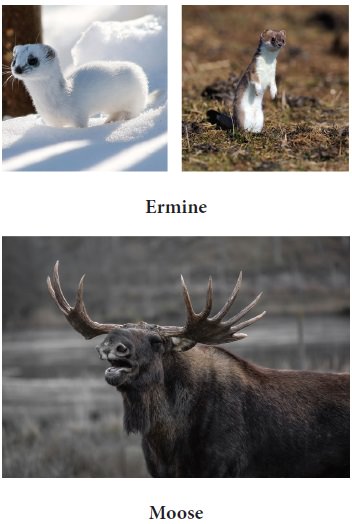
Lumbering is the main occupation of the people in areas which are easily accessible. The softwood from the coniferous forests is widely used in the manufacture of wood pulp and paper, newsprint, matches, furniture and building materials.
The hunting of fur bearing animals like musk rats, ermine, and silver fox are important economic activities. The taiga forest is endangered due to logging and mining by humans. When trees are cut down in the taiga it takes a very long time to restore itself because of the very short growing season.
viii. Tundra Biome
Tundra is a Finnish word which means barren land. The tundra region is a vast bowl lying beyond the Arctic Circle (66.5° North latitude) in the northern hemisphere along the shores of the Arctic Ocean. The Arctic tundra extends southwards from North Pole to the Taiga forest. Tundra is also found in the high altitudes especially in the Alpine region.
Due to long and severe cold winters, this region is treeless and has very little vegetation. The growing season for plants is very short. Natural vegetation mainly consists of shrubs, sedges, grasses, mosses and lichens.
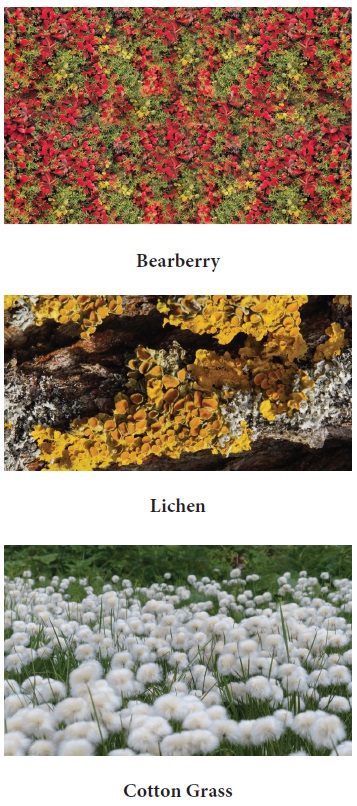

The main features of this climate in the tundra region are the general absence of insolation and presence of very low temperature throughout the year. The average annual temperature is about -12°C. The ground surface is covered with snow for at least 8 to 9 months in a year.
In this biome, the sub soil remains permanently frozen and is known as permafrost. Permafrost tundra covers vast barren areas of northern Russia and Canada. Algae and fungi are found on the rocky cliffs and rosette plants grow in rock and gravel beds. Spongy turf and lichen develop in the drier inland tundra.
Animals common to Arctic tundra are the polar bear, arctic wolf, arctic fox, arctic hare and arctic weasel. Large herbivores such as musk oxen, caribou and reindeer are found. Lemmings are also found in this Biome. Insects like moths, butterflies, beetles, mosquitoes and black flies are common in the Arctic tundra. Migratory birds include tundra swans, harlequin ducks, sand pipers, plovers, geese and gulls.
The Antarctic region is covered with ice sheets. It is too cold and dry to support vegetation. However, some portions of the continent have areas of rocky soil that support plant life. Vegetation comprises of mosses, lichens and liver worts. This area is referred to as Antarctic tundra. Seals and Penguins inhabit the shore areas of Antarctica.
Related Topics